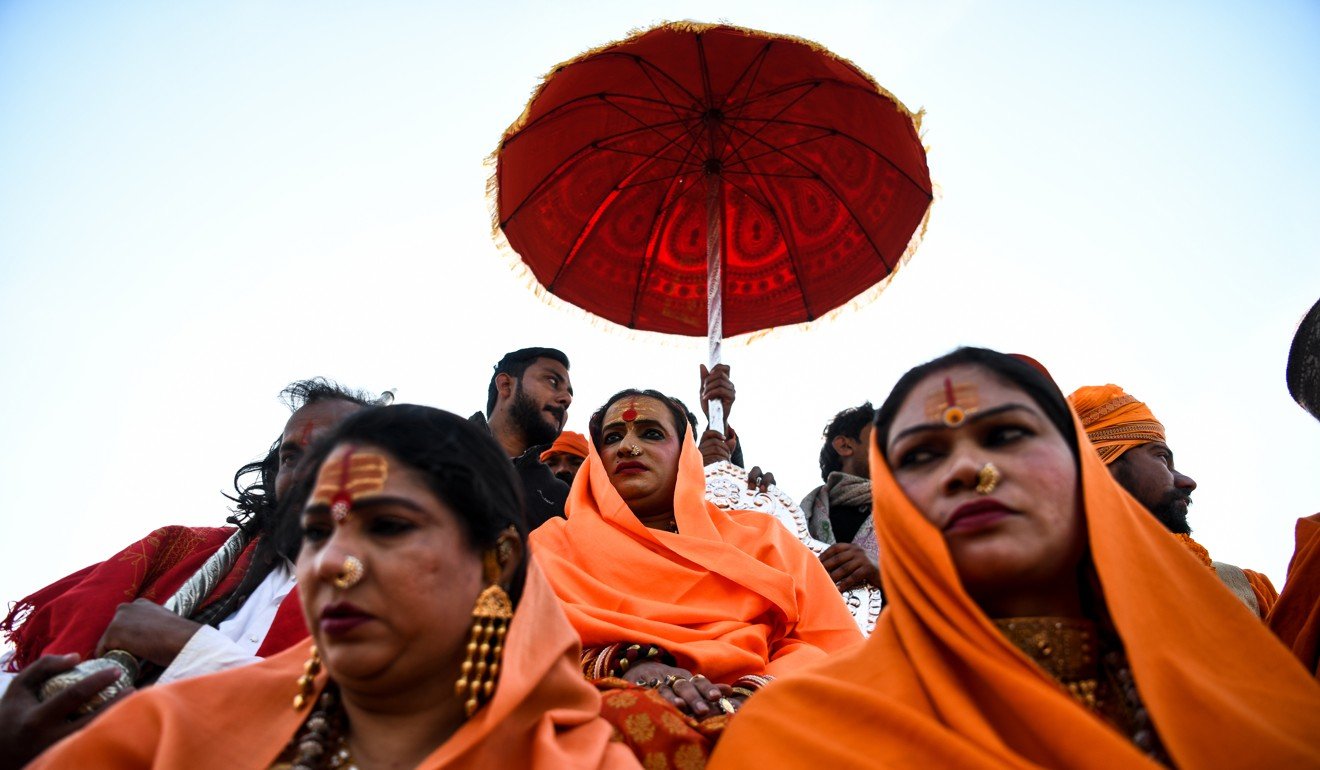
Meet Laxmi Narayan Tripathi, the transgender Indian demigod ‘bringing Hinduism back’
- Trans people in India today often live on the margins, banished from their homes and forced to sell their bodies for sex
- Yet once they were considered divine – and if this former reality TV star has her way, they will be again
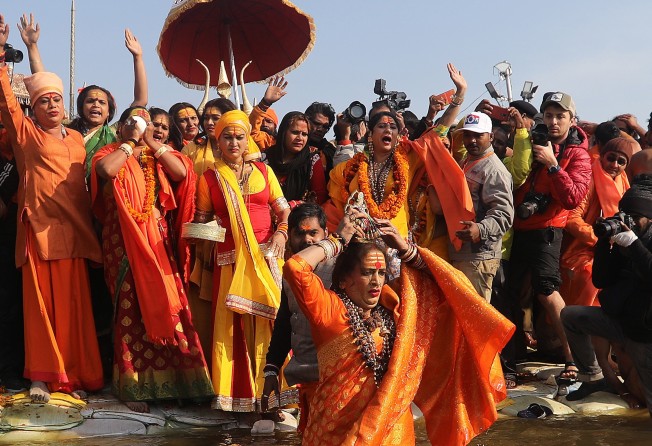
When Lord Rama, hero of the ancient Hindu epic Ramayana, returned to the city of Ayodhya after 14 years in exile, he found a crowd of transgender people waiting for him on the banks of the river Tamsa. They had ignored Lord Rama’s order to his male and female followers not to wait, as they considered themselves neither. Taken by their devotion, he blessed them, elevating them to demigods.
Today, after centuries of ostracism, India’s transgender community is challenging the Hindu religious establishment in an effort to reclaim that status. The face of their struggle is the trans activist Laxmi Narayan Tripathi, who at this year’s Kumbh Mela in Allahabad, Uttar Pradesh, commanded her followers to bathe at the confluence of the three holy rivers of the Ganges, Yamuna and Saraswati. Hindus believe doing so during the Kumbh – the world’s largest religious gathering – absolves one of sins and aids in salvation. For Tripathi’s newly established order, the Kinnar Akhara, the act took on added significance – it was the first time a trans group had done so.

Tripathi, 40, knows her powers well. Draped in a radiant red sari, the former reality television star is seated on a pedestal in her tent guarded by policemen and bouncers when This Week in Asia meets her at the Kumbh, which runs until March 4.
Businessmen and politicians pour in to pay tribute and members of the press jostle for a sound bite. Hundreds of devotees seeking her blessings queue outside. “Our souls have done penance for thousands of years to become a part of the mainstream again,” she says as the crowds dissipate late in the night.
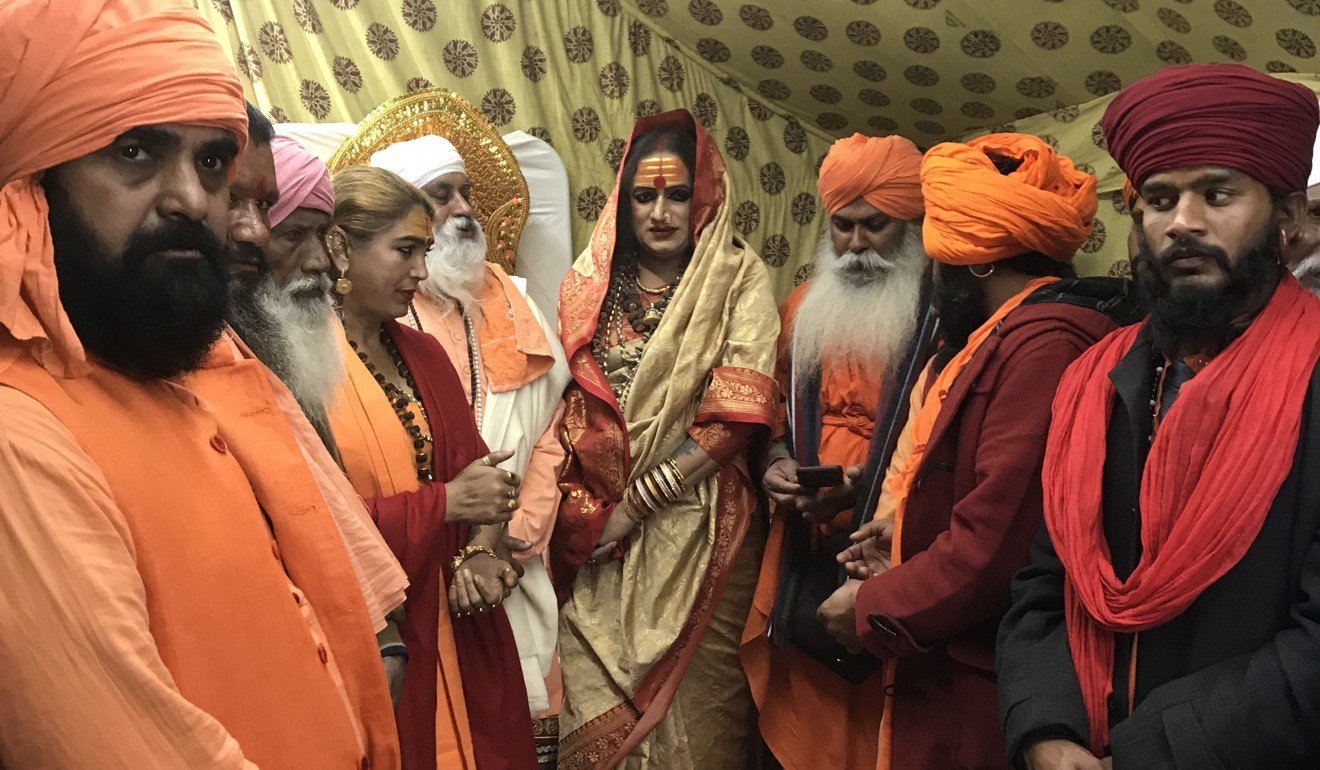
Tripathi wasn’t always the demigoddess she is today. Rather, she was queen of a world far removed from the monasticism that characterises the lives of Hindu ascetics. A showbiz celebrity and businessperson, Tripathi is the author of two books detailing her painful childhood that entailed sex abuse and social discrimination, her personal and professional struggle, and her open sexuality. Eloquent and educated, she is the first transgender woman to have represented the Asia-Pacific at the United Nations and is regarded as one of the key influences behind new laws that have formed in India around transgender rights.
LIFE ON THE MARGINS
Today, millions of India’s trans people scrape by on the margins of society, begging for alms at traffic lights, singing and dancing at auspicious events and soliciting sex work. Many are banished from their homes at a young age and live in abysmal conditions under the leadership of a guru – an older trans person who acts as mother, father, teacher and guide. For most, access to education and health care are distant dreams. Nearly 18 per cent of the trans people of India are HIV positive, compared to the national average of 0.31 per cent.
“Had the government been successful in reinstating our original stature, we wouldn’t have needed to beg, steal or strip ourselves naked or sell our bodies to make money,” says Pushpa Gidwani, a member of the Kinnar Akhara and a local trans activist who serves on the Transgender Welfare Board of the western state of Rajasthan.
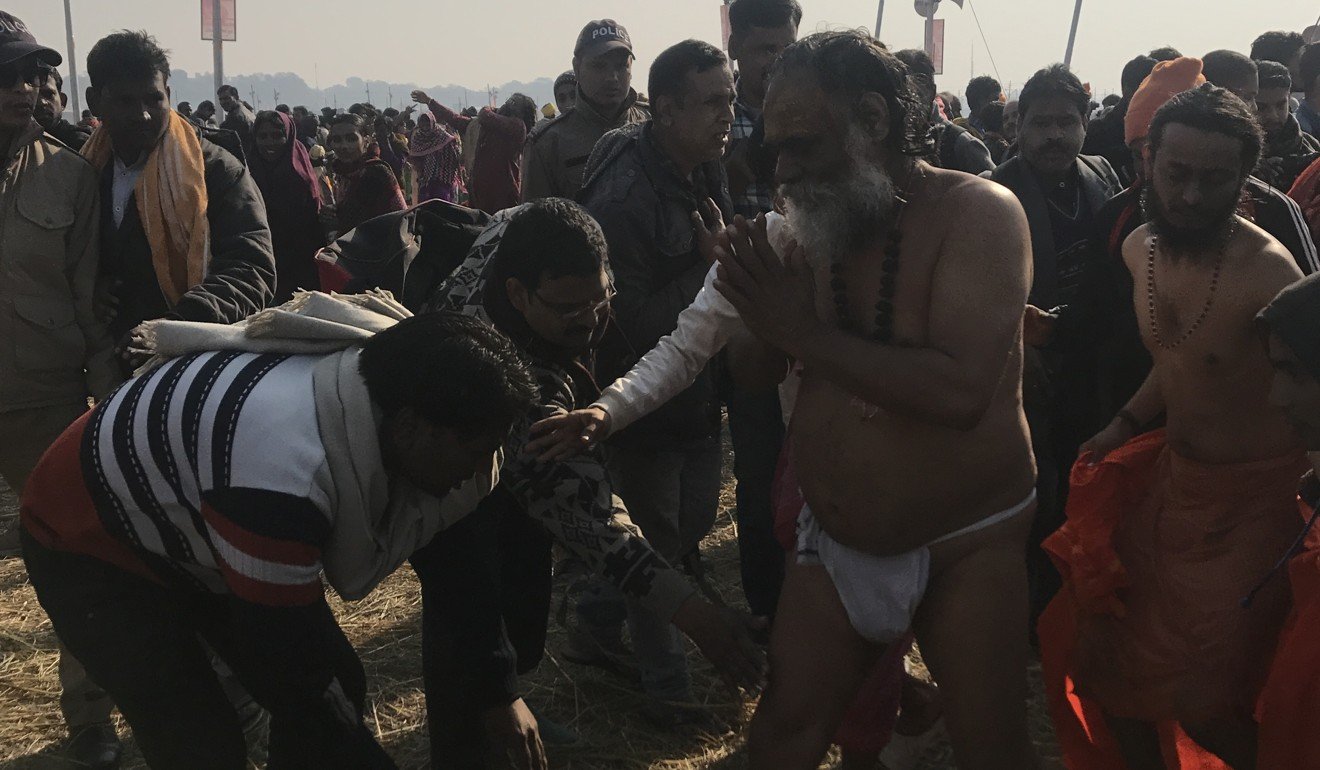
Historically, this systematic ostracism did not exist in such a black-and-white fashion. From the great war epic Mahabharata’s Shrikhandi, to the sex-lores of the Kama Sutra, trans identity has featured prominently in the amorphous, androgynous and gender-fluid myths surrounding India’s millions of deities.
Even under Islamic rule, the transgender community enjoyed a respected status at the court, serving as advisers to kings, army generals and safeguarding women and children. They have held a special place in South Asia’s syncretic Sufi culture with Amir Khusro, credited as the creator of Qawwali music (a genre of Indian classical music), famously cross-dressing as a woman to impress his peer, the Sufi saint Hazrat Nizamudding Auliya – an act of ultimate devotion and surrender.
For activists like Tripathi, most of the systematic oppression can be credited to the foul policies of the British rulers who circumscribed the concepts of sex and gender by bringing “Victorian morality” to their colonies. “Today in their parliament, the British want to be seen as being just but they are the root cause of the problems in the Asia-Pacific and the whole world,” Tripathi says.
We want to rule people’s hearts, not their fears
In 1871, the British Raj declared trans people criminals, snatching their property rights and turning them into a wandering tribe. The exploitation continued for over a century until a breakthrough in 2014, when the Supreme Court of India recognised trans as a third gender, opening the door for welfare and government benefits. Tripathi was a petitioner in the case. In September 2018, the Supreme Court revoked a 19th-century British penal code that criminalised same-sex relationships.
But little change has occurred in the perception of the public who consider trans people good enough to bless newlyweds and newborns but fear their ‘powers’ of cursing people. “We want to rule people’s hearts, not their fears,” Gidwani says.
For Tripathi, the only formula that will work in India embodies faith in a big way. “This is India, we have a strong cultural identity here. Why must I not re-claim it?” she asks. “It is only through faith that the original status of the transgender people in India can be reclaimed.”
Tripathi was born into a Brahmin family, the highest priestly caste in the Vedas, but never considered herself overtly religious. Hinduism dawned on her only after the 2014 Supreme Court ruling. “I [did not even consider myself] Indian before the [court] gave me my right as third gender,” she says, digging into her make-up kit for the perfect shade of lipstick to meet a forthcoming seer.

Even in her religious incarnation, Tripathi refuses to tone down her colourful persona.
In 2016, she rallied a few hundred trans people from across the country and declared herself their high priestess at the Ujjain Kumbh, held in the state of Madhya Pradesh. Many among religious and political circles were furious.
“The Kinnar Akhara is a media phenomenon for TV ratings,” says Mahant Narendra Giri, president of the Akhil Bharatiya Akhara Parishad (ABAP) the lead administrative body of all the Hindu akharas, or orders.
It was the ABAP under Giri that led the demand to rename the city of Allahabad – a Muslim name given by Mughal emperor Akbar in the 16th century – to its ancient Hindu name, Prayagraj, in October last year.
As many as 13 akharas constitute the establishment of Hindu asceticism and date back to antiquity – all dominated by men. There is little tolerance for a women’s akhara, despite the divine feminine being central to the faith. The proclamation of a 14th akhara by Tripathi is hence path-breaking. “Let alone the transgender people, nobody can make a new akhara,” Giri says.

For Tripathi, the disapproval of one of the most powerful men behind the festival matters little. “We are demigods. Who is he to question us? He should keep his mouth shut,” she quips, motioning at the growing swell of devotees queuing at her tent’s entrance to come in.
Tripathi’s growing religious clout is a recent phenomena. For two years she went door-to-door in a grass roots campaign, mobilising the larger Hindu community in Prayagraj to bolster her demand for a space at this year’s festival. The negotiations took weeks, but she struck a deal with the oldest, largest and most influential order – the Juna Akhara – just days before the beginning of the Kumbh, and her group took the holy bath under their wing in the presence of cheering crowds.
“We are not claiming to have reversed their exploitation, but yes we have accepted them with open arms,” says Avdheshanand Giri Maharaj, leader of the Juna Akhara.
And so, the Kinnar Akhara is not just theatrics. For India, this is the first time a vocal transgender community has won legitimacy and acknowledgement within the mainstream religious fold.
This year at the Kumbh, the smallest and the newest akhara of India’s transgender people is also among the busiest. Men, women, children, soldiers, and sages line up to collect one-rupee coins, a traditional blessing given by a transgender person.
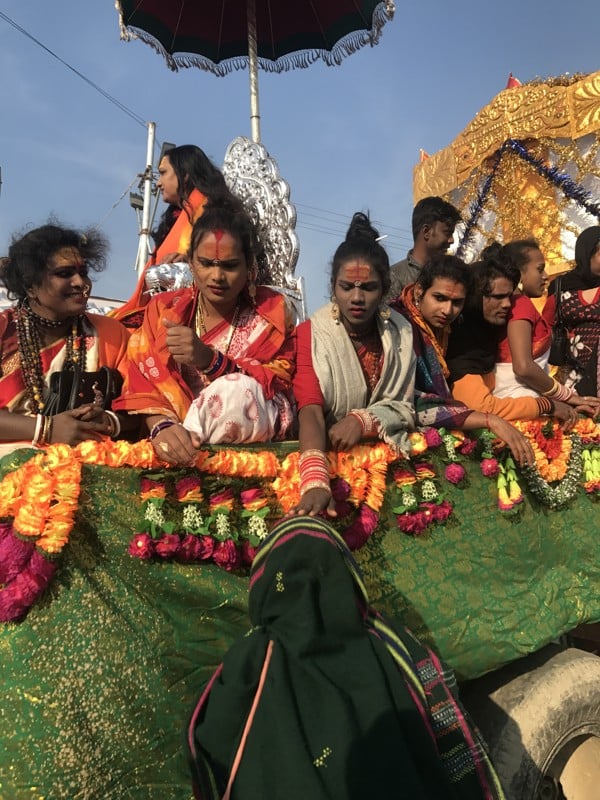
For photographer Punit Reddy, 34, who has spent years documenting India’s trans community and is curating a “queer art” festival in the precincts of the Kumbh Mela, Kinnar Akhara has brought the community’s struggle to the country’s middle-class and rural people.
“This is what makes the movement Indian and truly marks an epoch in the global LGBTQ movement. India was hitherto just another face of the global LGBTQ movement,” he says.
“Now, it seems that things are getting Indianised. This is the place where the real mainstreaming is happening.”
I’M BRINGING HINDUISM BACK
Tripathi’s ideological alignment towards her Hindu faith might be helping her people’s cause, but her detractors say she is playing into the hands of the right-wing Bharatiya Janata Party (BJP) ruling India.
Some in the trans community and human rights groups criticise the BJP for consulting figures like Tripathi rather than the trans community at large when it comes to policy.
Last year, Tripathi announced that her nascent akhara would launch a campaign for the speedy construction of the Ram temple at the disputed site of Ayodhya, a flashpoint of Hindu-Muslim discord and a long-time battle cry of the Hindu right. The 16th century mosque that stood at what is considered the birthplace of Lord Rama was desecrated by a mob in 1992, leading to widespread communal violence in the country.

The matter has for years been sub judice and Tripathi has grown impatient. “Where my Lord Rama has been born, his temple should be built there. The transgender people will lay the foundation of the temple walls with their blood if need be. Our ancestors have a special relationship with Rama, they waited for his return for years,” she says.
Tripathi also says she wants to create a faith-based space for transgender Hindus, where formerly Muslim trans people can return to the fold of Hinduism, and pre-empt conversion to Islam among the Hijra community – a policy otherwise known as ghar wapsi (homecoming) by the Hindu right.
A sizeable population of India’s transgender people historically converted to Islam in the middle ages. Quite a few today practise a syncretic blend of Hinduism and Islam.
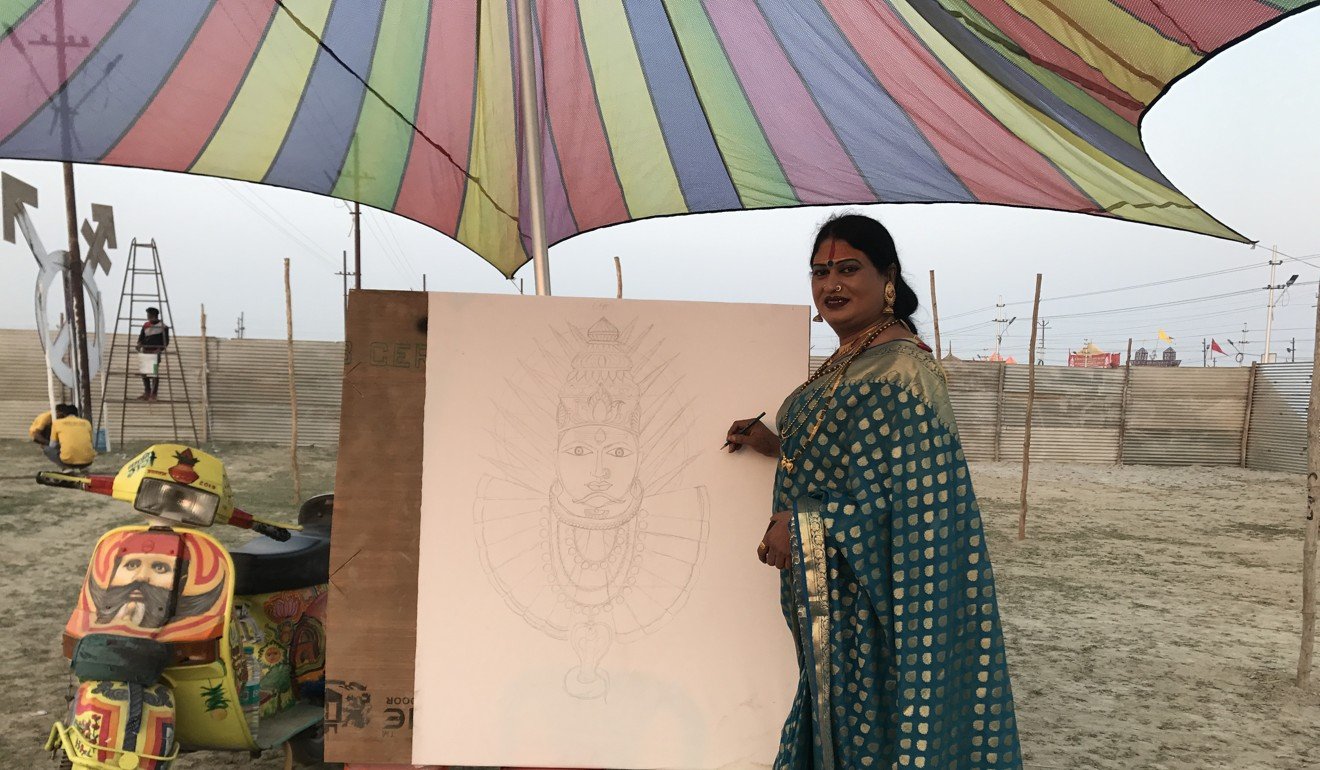
“My community had become too Islamic. I am bringing back Hinduism in such pomp and splendour,” Tripathi says.
Tripathi, who says she enjoys a good influence in government policy circles, claims she is non-partisan and has “nothing to do with Modi”, India’s nationalist strongman prime minister. However, her endorsement of the Rama temple at a time when the Ayodhya debate is bubbling ahead of the critical 2019 general elections – where religion will once again serve as a tool for mobilising voters – has sealed her position in the world of seers and politicians alike.
Tripathi’s ultimate vision for the Indian trans community? “I want a prime minister from my community. I am not interested in being one. I am just paving the way,” she says. ■